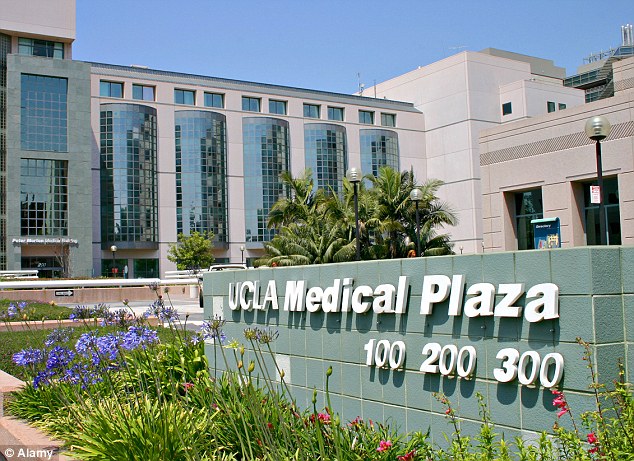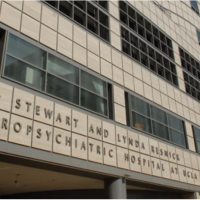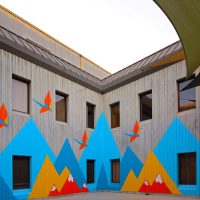Our History
The UCLA Division of Child Psychiatry was founded in 1955, headed by Henry H. Work, M.D., who left UCLA in 1972 to become Deputy Medical Director of the American Psychiatric Association. The first Director of Training in Child Psychiatry was Justin Call, M.D. He joined the UCLA faculty in 1954 and stayed until 1968 when he assumed the position of Chief of Child Psychiatry at University of California, Irvine.
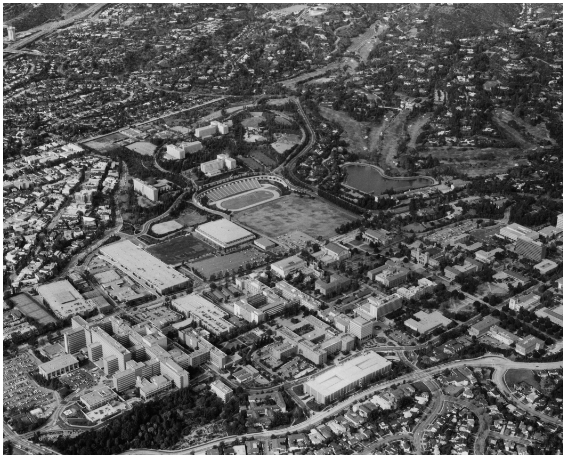
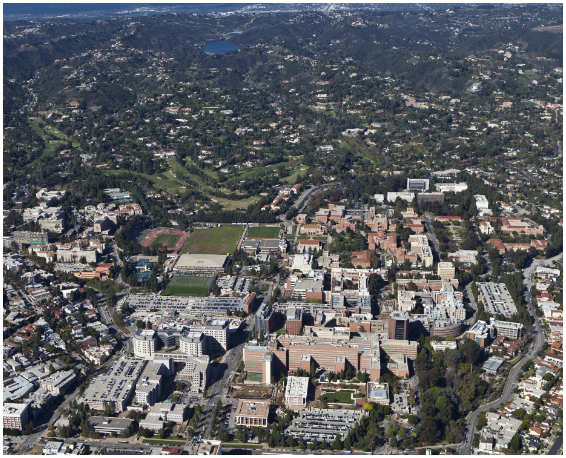
Aerial view of UCLA Campus circa 1970 (left); Aerial view of UCLA campus and medical center circa 2014 (right)
James Q. Simmons III, M.D. became the first Child Psychiatry Resident in 1955. In 1962, he joined UCLA faculty as an Assistant Professor and Chief of Children’s Inpatient Services. That same year, he founded a groundbreaking inpatient program for severely mentally disturbed children and adolescents at UCLA’s Neuropsychiatric Institute in order to provide comprehensive evaluation and treatment for children and teenagers whose mental disorders were severe enough to warrant hospitalization. The field of child psychiatry was just beginning to emerge as an important subspecialty, and the program focused almost exclusively on child training for general psychiatric residents at a time when psychoanalytic theoretical framework served as the cornerstone of psychiatric training. Simmons helped devise and promote more humane, state-of-the-art services for children who were diagnosed as “mentally retarded” or “autistic” and established one of the nation’s first interdisciplinary training programs for professionals who worked with them.
The first significant expansion of the Child Psychiatry Program occurred in 1958 when the California Legislature made an $8-million-dollar investment to begin the construction of the UCLA Neuropsychiatric Institute and Hospital (NPI-H), which would provide greatly augmented facilities for outpatient and inpatient psychiatric care. Construction of the 6-story building concluded in 1961. Construction of the UCLA Brain Research Institute building, dedicated to neuroscience research and education, was completed that same year. Together, the two facilities constituted a powerful West Coast complex for research, education, and clinical care in neurology, neurosurgery, neuroscience and psychiatry. It was around this time when the American Board of Psychiatry and Neurology established the first child psychiatry certification. The subspecialty of child psychiatry was now becoming more clearly defined and visibly recognized throughout the nation, corresponding with a growing population of children with increasingly diverse and severe impairments who required an increasingly eclectic approach to clinical care and treatment. This rising demand for comprehensive psychiatric care sparked interest in enlarging of the body of knowledge required by the child psychiatrist.
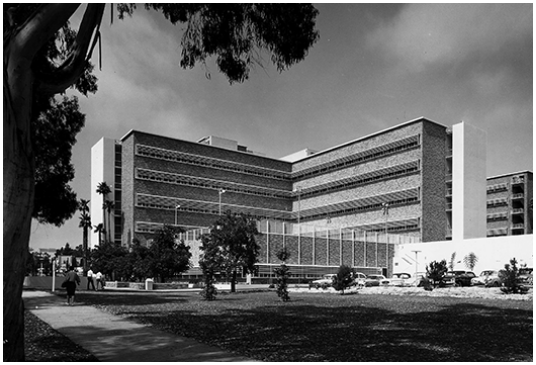
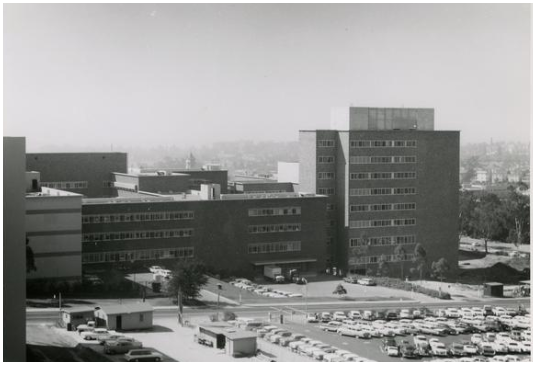
The UCLA Neuropsychiatric Institute and Hospital (NPI-H), during (top) and after (bottom) construction in 1961. Now the Semel Institute for Neuroscience and Human Behavior.

Dr. George Tarjan, still image (Sept, 1969)
In 1965, George Tarjan, M.D. joined the UCLA NPI-H faculty as the new Director of the Division of Child Psychiatry. Dr. Tarjan was a powerful force in addressing the needs of the developmentally impaired, and so, in order to help the Child Psychiatry program accommodate the ever-increasing need for knowledge and patient facilities, he headed up an expansion of the NPIH building, transforming the facility into a national model for psychiatric care and scientific research. He eventually established investigation facilities at the hospital that expanded to a large socio-behavioral laboratory occupying the major portion of a $1.4-million- dollar research building, now the Tarjan Research Center.
These progressive expansions had profound effects on the structure and function of the UCLA Division of Child Psychiatry. The faculty and staff multiplied from 3 to 300, and the focus of the once small division grew to incorporate thirteen distinct disciplines into its training: psychiatry, psychology, pediatrics, social work, occupational therapy, special education, linguistics, nursing, media, administration, dentistry, computer resources, and community liaison. The scientific underpinnings of the division and its training programs became both discipline-specific and interdisciplinary. The UCLA Division of Child and Adolescent Psychiatry became a multi-dimensional program that staffed and trained many of the leading child psychiatrists of the 21st century.

Aerial view of UCLA Medical Center (Ronald Reagan Hospital, UCLA Medical Plaza, Jane & Terry Semel Institute for Neuroscience and Human Behavior, and the Stewart & Lynda Resnick Neuropsychiatric Hospital) as they stand today.
In 2004, the Neuropsychiatric Institute was renamed the Jane & Terry Semel Institute for Neuroscience and Human Behavior. In 2007, the Neuropsychiatric Hospital was renamed the Stewart & Lynda Resnick Neuropsychiatric Hospital and moved into new facilities at the Ronald Reagan Medical Center, again raising the standards of excellence in patient care, education and research. Today, the UCLA Division of Child and Adolescent Psychiatry, the Semel Neuropsychiatric Institute, and the Resnick Neuropsychiatric Hospital continue to grow, develop and improve within the collegial and multidisciplinary atmosphere of the University of California, Los Angeles.


